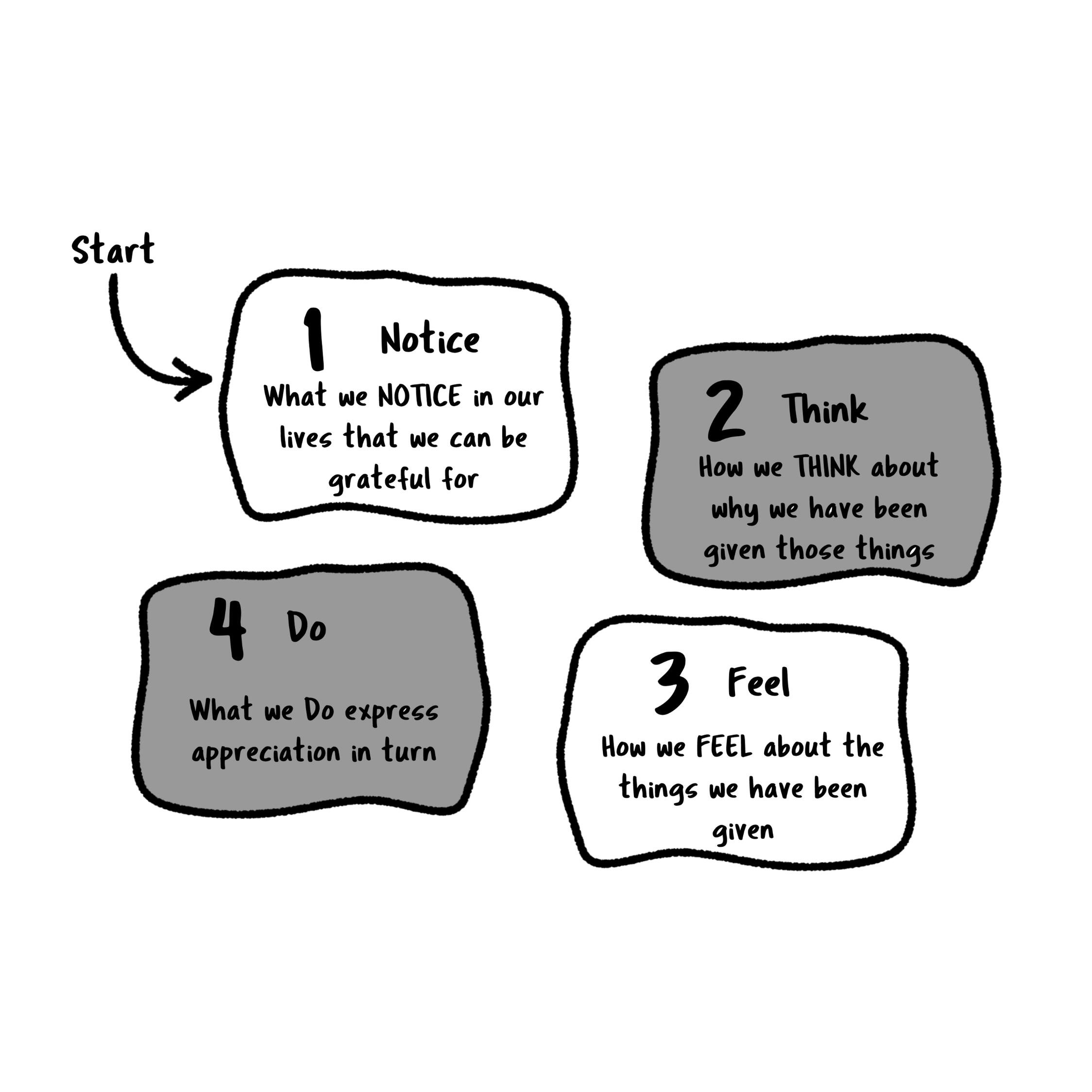
What is Practice Gratitude?
Practice Gratitude is a deliberate mental framework that involves regularly acknowledging and appreciating the positive aspects of life, both big and small. It's not about ignoring challenges or pretending everything is perfect; rather, it's about training our minds to notice and savor the good that coexists with life's difficulties.
This framework goes beyond mere positive thinking. It's a evidence-based approach that rewires our brains to scan for positives rather than threats, creating lasting changes in how we perceive and experience the world around us.
The History and Origin
While gratitude has been valued across cultures for millennia, appearing in ancient philosophical and religious texts, the scientific study of gratitude as a psychological intervention is relatively recent. Dr. Robert Emmons, often called the world's leading gratitude researcher, began studying gratitude scientifically in the late 1990s.
His groundbreaking research, along with work by Dr. Martin Seligman in positive psychology, demonstrated that gratitude practices could measurably improve well-being, relationships, and even physical health. This transformed gratitude from a nice sentiment into a scientifically validated tool for improving life quality.
How to Use the Practice Gratitude Framework
Step 1: Choose Your Method
Select a gratitude practice that fits your lifestyle:
- Gratitude journaling (writing 3-5 things daily)
- Mental gratitude meditation
- Gratitude letters or messages
- Gratitude jar (writing notes to read later)
- Verbal sharing with family or friends
Step 2: Set a Consistent Time
Establish a regular time for your practice:
- Morning: Sets a positive tone for the day
- Evening: Helps process the day positively
- Mealtime: Creates a family ritual
- Transition moments: During commute or breaks
Step 3: Be Specific and Detailed
Instead of generic statements like "I'm grateful for my family," be specific:
- "I'm grateful for my partner's encouraging words when I was stressed about the presentation"
- "I appreciate how my daughter shared her snack with her friend today"
Step 4: Include Different Categories
Vary what you're grateful for:
- People and relationships
- Personal qualities or abilities
- Material comforts
- Experiences and memories
- Nature and beauty
- Challenges that led to growth
Step 5: Feel the Emotion
Don't just think the words; try to genuinely feel the appreciation. Spend a moment savoring each item, allowing the positive emotion to wash over you.
Step 6: Express Gratitude Outwardly
When possible, share your gratitude with others. Tell people specifically what you appreciate about them or their actions.
Practical Examples
Daily Journaling: Sarah starts each morning by writing three specific things she's grateful for in a notebook by her bed. Examples: "The warmth of my morning coffee," "My colleague's help with the difficult client yesterday," "My health that allows me to take my daily walk."
Family Dinner Ritual: The Johnson family shares one thing they're grateful for before each dinner. This practice has improved family communication and helped their children develop positive mindsets.
Gratitude Letter Practice: Once a month, David writes a detailed letter to someone who has positively impacted his life. He's reconnected with old friends and strengthened current relationships through this practice.
Workplace Application: A manager starts team meetings with a "gratitude round" where each member shares something they appreciate about a colleague's recent contribution. This has dramatically improved team morale and collaboration.
Benefits and Life Impact
The Practice Gratitude framework can transform your life in remarkable ways:
Enhanced Mental Health: Regular gratitude practice has been shown to reduce symptoms of depression and anxiety while increasing overall life satisfaction and happiness.
Improved Physical Health: Studies show grateful people experience better sleep, lower blood pressure, stronger immune systems, and reduced inflammation.
Stronger Relationships: Expressing gratitude strengthens bonds, increases relationship satisfaction, and makes you more attractive to others as a friend or partner.
Increased Resilience: Gratitude helps buffer against stress and trauma, allowing you to bounce back more quickly from life's challenges.
Greater Success: Grateful people are more productive, creative, and successful in their careers, partly because they build stronger professional networks.
Positive Spiral Effect: Gratitude creates an upward spiral – the more you practice, the more you notice to be grateful for, which increases positive emotions, which makes it easier to find more gratitude.
Reduced Materialism: Regular gratitude practice decreases the endless wanting that characterizes consumer culture, leading to greater contentment with what you have.
Enhanced Empathy: Grateful people show increased empathy and reduced aggression, contributing to better social connections and community involvement.
The Practice Gratitude framework is like a pair of glasses that helps you see the world more clearly – not through rose-colored lenses that distort reality, but through lenses that help you notice the genuine good that you might otherwise overlook. In a world that profits from our dissatisfaction, choosing gratitude is both a radical act and a practical tool for building a life of greater joy, connection, and fulfillment. Start small, be consistent, and watch as this simple practice transforms not just your mood, but your entire approach to life.